Apple ad 1984
Retelling a story through a series of pictures.
 |
| Apple ad 1984 |
The story of the classic Apple ad aired at the Supperbowl 1984 is a classic underdog story.
Photographs, sometimes sketches, and the stories they tell. Short discussions on why a photograph was taken. The odd technical note.
Retelling a story through a series of pictures.
 |
| Apple ad 1984 |
 |
| Yellow steel door, concrete wall and vine |
Labels: concrete, Frank Lloyd Wright, vines
Labels: Curves, magic wand, overexposure, Photoshop, underexposure

Labels: framing, glass, landscape orientation, portrait orientation, windows
Labels: background, foreground, glass, windows
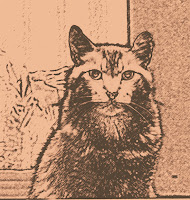
 Sometimes it is necessary to change the features in a face so the subject is
not recognizable as a photographic likeness. Perhaps because you want to create a different effect or because the subject may not want to be recognized.
Sometimes it is necessary to change the features in a face so the subject is
not recognizable as a photographic likeness. Perhaps because you want to create a different effect or because the subject may not want to be recognized. 
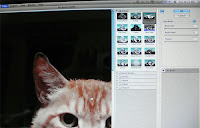
Labels: face, Photoshop, sketch, watercolor
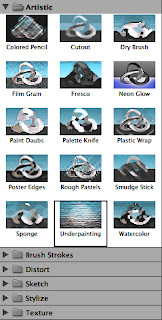
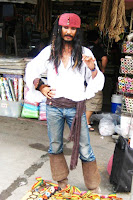
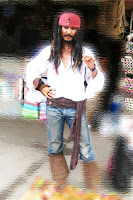
Labels: background, blurring, Jack Sparrow, Photoshop
Labels: call outs, speech balloon, speech bubble, Word
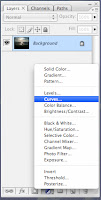
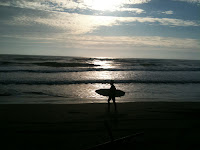
Labels: brightness, contrast, Curves, histogram, Photoshop
 |
| Spine |
 |
| Cover |
 |
| Laid out |
Labels: book covers, books
 |
| Mercedes 170d |
Labels: cars, Mercedes 170

Sunflowers. There is an amazing energy in a field of yellow sunflowers.
Helen Keller said,
”Keep your face to the sunshine and you cannot see the shadow. It's what sunflowers do.”
There comes a time nevertheless, when even a sunflower loses its life. And when life goes, color goes.
A black and white image of something as universally yellow as a sunflower, comes as a shock.
Is it because, as Stefan Kanfer says, “There's something strange and powerful about black-and-white imagery.”
Asahi Pentax, 200mm, 1974.
Labels: black and white, novelty effect, sunflower

“Dreaming of a white cat means good luck.” American superstition.
“Black cat or white cat: If it can catch mice, it's a good cat.” Chinese proverb.
Double the luck? Double the mice?
Matching the background to the subject doubles the impact.
And in this case, leaves the eyes, nose and ears.
Canon 5DII. HK. 17-40mm. ISO 2000. 1/25, f4.0.
...
...

Which picture?
Selecting a picture from a succession of images moving past the camera.
In the days of film, choosing the “decisive moment” (Cartier Bresson) used to be difficult, but now with speedy shutters, and digital storage, it is not.

Rowers on a river. The single scull approaches the landing.
In the first shot the single scull is too far away and the double scull is too close to the landing.
In the second shot, the single scull is just positioned right with a pleasing cluster of boats and landing.
In the third shot the scene has fallen apart. It is unbalanced and there is no connection between the single scull and the double scull.

On the computer screen we may have two or three or as many as a dozen shots to sift through.
See a short video on Cartier-Bresson here on the decisive moment.
Canon 5DII, 70-200 (200), f4, 1/3200, Colonia del Sacramento 101010
...
Labels: Cartier-Bresson, decisive moment
...
Labels: Kyoto, perspective, red